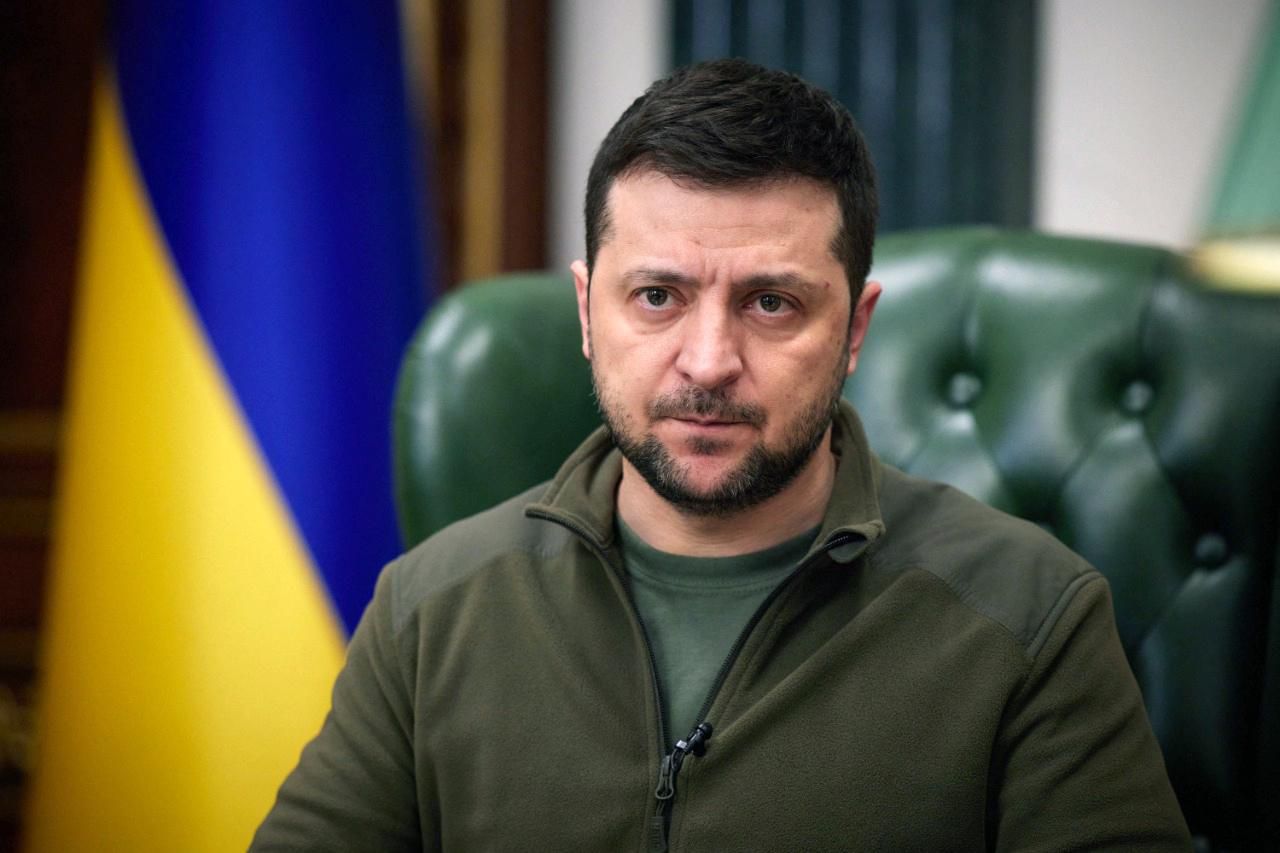As the war in Ukraine grinds on, the United Nations says 2.8 million civilians have now fled the country. Millions more remain trapped in harm’s way. Cities like Kharkiv, Mariupol, and many others are running out of food, fuel, and electricity. The port city of Odessa is building defenses. But it’s in Kyiv, the capital, where the war is coming to a head. Russian forces are getting ready for a major assault, Ukrainian soldiers are preparing for a fight, and civilians are bracing for impact. On Monday, the city suffered the biggest Russian artillery barrage so far.
The best-known person in Kyiv at the moment is Ukrainian President Volodymyr Zelensky, and his personal fate has become an important variable in what happens after the fighting ends. Here are four scenarios:
- Zelensky escapes a Russian capture of Kyiv and, with recognition from most governments as Ukraine’s legitimate president, leads a government in exile – either from unoccupied Western Ukraine or from abroad.
- Zelensky is killed in the fighting and becomes a martyr of Ukrainian independence.
- Russian forces take Zelensky prisoner, and his freedom becomes a diplomatic bargaining chip.
- Russian forces fail to take Kyiv, and Zelensky’s status as national hero and international icon of resistance is reinforced. Russia’s President Putin is forced to bargain with him.
Each of these scenarios carries long-term risks. And each is being discussed behind closed doors in Kyiv, Moscow, Washington, and across Europe.
Monday’s most important conversation outside Russia and Ukraine took place in Rome, where US National Security Adviser Jake Sullivan sat down with senior Chinese diplomat Yang Jiechi. The backdrop for this conversation includes internal debates in Washington and Beijing. In the US, the arguments are about whether courtship or pressure is more likely to persuade China to keep its distance from Russia. In China, the discussion is about how openly China can back Russia without permanently antagonizing its lead trade partners, the EU and US.- Eastern European leaders visit Kyiv in unprecedented show of support - GZERO Media ›
- Zelensky plea for additional Ukraine support puts US in a bind - GZERO Media ›
- Zelensky knows how to talk to the West - GZERO Media ›
- Volodymr Zelensky: TIME's 2022 Person of the Year - GZERO Media ›
- Volodymr Zelensky: TIME's 2022 Person of the Year - GZERO Media ›
- Surprise, Vladimir Putin: Why Ukrainians resisted Russian "liberation" - GZERO Media ›
More For You
Gotta maximize sleigh-holder value. #PUPPETREGIME
Most Popular
On Ask Ian, Ian Bremmer breaks down the steady escalation of US pressure on Venezuela and why direct military action is now a real possibility.
From civil conflicts to trade wars to the rise of new technologies, GZERO runs through the stories that have shaped this year in geopolitics.
Ukrainian intelligence services assassinated a senior Russian general on the streets of Moscow on Monday, detonating a bomb strapped to his car.
